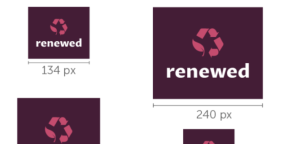Word of mouth is a powerful marketing tool that has been around since the beginning of human communication. It refers to the act of sharing information about a product, service, or experience with others through oral communication. Word of mouth can be both positive and negative, and it can have a significant impact on the success or failure of a business.
One of the reasons why word of mouth is so effective is that it comes from a trusted source. People are more likely to believe and act on recommendations from friends, family, or colleagues than they are from traditional advertising or marketing campaigns. This is because they perceive the information to be unbiased and based on personal experience.
In today’s digital age, word of mouth has evolved to include online reviews, social media posts, and other forms of digital communication. However, the underlying principle remains the same: people trust the opinions of others, and businesses can benefit greatly from positive word of mouth. In the following sections, we will explore the different types of word of mouth, how it can be leveraged by businesses, and the potential risks and rewards of this marketing strategy.
Understanding Word of Mouth
Word of mouth is a powerful marketing tool that relies on personal recommendations and communication to promote a product or service. It is an informal way of spreading information and has been used for centuries to influence consumer behavior. In this section, we will explore the basics of word of mouth and how it works.
How Word of Mouth Works
Word of mouth relies on interpersonal communication to spread information. It can occur in many different settings, such as social gatherings, online forums, or workplace conversations. People share their experiences and opinions about products or services with others, and this information can influence their decision-making process.
Word of mouth can be both positive and negative. Positive word of mouth can lead to increased sales and brand loyalty, while negative word of mouth can damage a company’s reputation and decrease sales. Therefore, it is important for companies to monitor and manage their word of mouth marketing strategies.
Types of Word of Mouth
There are several types of word of mouth marketing strategies that companies can use to promote their products or services:
- Experiential word of mouth: This type of word of mouth is based on personal experiences with a product or service. People share their positive or negative experiences with others, which can influence their purchasing decisions.
- Consequential word of mouth: This type of word of mouth is based on the consequences of using a product or service. For example, if a product is environmentally friendly, people may share this information with others who are interested in sustainability.
- Intentional word of mouth: This type of word of mouth is based on deliberate efforts to promote a product or service. Companies may use influencers or brand ambassadors to promote their products on social media or other platforms.
Benefits of Word of Mouth
Word of mouth is a cost-effective marketing strategy that can provide several benefits to companies:
- Increased brand awareness: Positive word of mouth can increase a company’s visibility and attract new customers.
- Higher conversion rates: People are more likely to trust recommendations from friends and family than traditional advertising.
- Improved customer loyalty: Positive word of mouth can lead to increased customer satisfaction and loyalty.
In conclusion, word of mouth is a powerful marketing tool that relies on personal recommendations and communication to promote a product or service. Companies can use various types of word of mouth marketing strategies to increase brand awareness, improve customer loyalty, and attract new customers.
Importance of Word of Mouth
Word of mouth is a powerful marketing tool that can help businesses reach new audiences and build a positive brand reputation. In fact, word-of-mouth marketing is one of the most effective ways to spread information about a company or product. In this section, we will discuss the importance of word of mouth in more detail.
Influence on Consumer Behavior
Word of mouth has a significant influence on consumer behavior. People are more likely to trust recommendations from friends and family members than they are to trust advertising or other forms of marketing. According to a study by Nielsen, 92% of consumers trust recommendations from friends and family members over all other forms of advertising.
Positive word-of-mouth can also lead to increased customer loyalty. When customers have a positive experience with a product or service, they are more likely to become repeat customers and recommend the product or service to others.
Role in Business Growth
Word of mouth can play a critical role in business growth. When customers recommend a product or service to others, it can lead to increased sales and revenue for the business. In addition, word of mouth can help businesses build a positive reputation in the community, which can lead to increased brand awareness and customer loyalty.
Businesses can also leverage word of mouth to generate new leads and customers. By providing excellent customer service and encouraging customers to share their experiences with others, businesses can create a powerful marketing tool that can help them grow and succeed.
In conclusion, word of mouth is a powerful marketing tool that can help businesses reach new audiences, build a positive brand reputation, and drive growth and success. By focusing on providing excellent customer service and encouraging customers to share their experiences with others, businesses can leverage the power of word of mouth to achieve their goals and succeed in today’s competitive marketplace.
Word of Mouth Marketing Strategies
Word of mouth marketing is a powerful tool to spread the word about your business. Here are some effective strategies to leverage word of mouth marketing:
Leveraging Social Media
Social media platforms like Facebook, Twitter, and Instagram are great places to start building a buzz around your brand. You can use these platforms to connect with your customers, share your story, and showcase your products or services. Here are some tips to leverage social media for word of mouth marketing:
- Engage with your followers: Respond to comments, messages, and mentions. Engaging with your followers helps build a relationship with them and encourages them to share their positive experiences with others.
- Share user-generated content: Encourage your followers to share their experiences with your products or services on social media. Share their posts on your own account to show your appreciation and encourage others to do the same.
- Run social media contests: Contests are a great way to generate buzz around your brand. Encourage your followers to share your posts or tag their friends to enter the contest. This can help spread the word about your brand to a wider audience.
Creating Shareable Content
Creating shareable content is another effective way to encourage word of mouth marketing. Here are some tips to create shareable content:
- Make it visually appealing: People are more likely to share content that looks good. Use high-quality images and videos to make your content stand out.
- Keep it short and sweet: Attention spans are short on the internet. Keep your content short and to the point to increase the chances of it being shared.
- Make it informative or entertaining: People are more likely to share content that provides value or entertainment. Create content that educates or entertains your audience to encourage them to share it with others.
Implementing Referral Programs
Referral programs are a great way to incentivize your customers to spread the word about your brand. Here are some tips to implement a successful referral program:
- Offer a reward: Offer a discount or free product to customers who refer their friends to your business. This can encourage them to spread the word about your brand.
- Make it easy: Make it easy for customers to refer their friends. Provide them with a unique referral link or code that they can share with their friends.
- Follow up: Follow up with customers who refer their friends to thank them and offer them their reward. This can help build a relationship with your customers and encourage them to refer more people in the future.
By implementing these word of mouth marketing strategies, you can encourage your customers to spread the word about your brand and attract new customers to your business.
Challenges in Word of Mouth Marketing
Word of mouth marketing (WOMM) is a powerful tool for businesses to build brand awareness, attract new customers, and increase customer loyalty. However, there are several challenges that businesses face when implementing WOMM strategies.
Maintaining Authenticity
One of the biggest challenges in WOMM is maintaining authenticity. Consumers are becoming increasingly savvy and can quickly detect when a brand is trying to manipulate them. If they feel that a brand is being disingenuous or insincere, they are less likely to trust the brand and may even become detractors.
To maintain authenticity, businesses should focus on building genuine relationships with their customers. This involves listening to their feedback, responding to their concerns, and providing excellent customer service. It also means being transparent about your intentions and not trying to deceive or manipulate your customers.
Managing Negative Feedback
Another challenge in WOMM is managing negative feedback. While positive word of mouth can be incredibly beneficial for a business, negative word of mouth can be equally damaging. In the age of social media, negative feedback can spread quickly and have a significant impact on a brand’s reputation.
To manage negative feedback, businesses should have a clear plan in place for addressing customer complaints and concerns. This involves responding promptly and professionally to negative feedback, acknowledging the issue, and working to resolve it. It also means being proactive in addressing potential issues before they become major problems.
In conclusion, WOMM can be a powerful tool for businesses, but it also comes with its own set of challenges. By maintaining authenticity and managing negative feedback, businesses can overcome these challenges and build a strong, loyal customer base.
Case Studies of Successful Word of Mouth Marketing
Word of mouth marketing is a powerful tool that can help you reach new customers and build a loyal following. Here are a few case studies of successful word of mouth marketing campaigns that can inspire you to create your own:
1. Zappos
Zappos is a company that has built its entire business around word of mouth marketing. They focus on providing exceptional customer service and creating a culture of happiness. By doing so, they have created a loyal following of customers who love to talk about their experiences with the brand.
2. Dropbox
Dropbox is a cloud storage company that used word of mouth marketing to grow from 100,000 to 4 million users in just 15 months. They offered free storage to anyone who referred a friend, and this simple strategy helped them to quickly gain a large user base.
3. Airbnb
Airbnb is a platform that connects travelers with people who have extra space to rent. They used word of mouth marketing to grow their business by offering a referral program that rewarded both the referrer and the person they referred. This helped them to quickly gain a large user base and become a household name.
4. Glossier
Glossier is a beauty brand that has built its business around social media and word of mouth marketing. They encourage their customers to share their experiences with the brand on social media and offer a referral program that rewards both the referrer and the person they refer. This has helped them to quickly gain a loyal following and become a popular brand among millennials.
By studying these successful word of mouth marketing campaigns, you can learn valuable lessons about how to create your own. Focus on providing exceptional customer service, create a culture of happiness, offer incentives for referrals, and encourage your customers to share their experiences on social media. With these strategies, you can build a loyal following and grow your business through the power of word of mouth marketing.
Future Trends in Word of Mouth Marketing
As technology continues to advance and consumer behavior evolves, the future of word of mouth marketing is likely to change as well. Here are some potential trends to keep an eye on:
1. Increased Emphasis on Micro-Influencers
While influencer marketing has been a popular strategy for some time, there is a growing trend towards using micro-influencers. These are individuals with smaller followings (typically between 1,000 and 100,000) who have a highly engaged audience. Brands are starting to recognize that these micro-influencers can be just as effective (if not more so) than larger influencers, as their followers tend to trust them more and view them as more authentic.
2. More Personalized Recommendations
As AI and machine learning continue to improve, we can expect to see more personalized recommendations being made to consumers. This could include everything from personalized product recommendations based on past purchases, to recommendations for products or services that are popular among people in their social network.
3. Greater Use of User-Generated Content
User-generated content (UGC) has been a popular trend for some time, but we can expect to see even more brands embracing this strategy in the future. This could include everything from encouraging customers to share photos or videos of themselves using a product, to hosting contests that encourage users to create their own content.
4. Increased Integration with Social Media
Given that word of mouth marketing is inherently social, it makes sense that we would see even greater integration with social media platforms in the future. Brands may start to focus more on building communities on social media, and using these communities to drive word of mouth recommendations.
Overall, the future of word of mouth marketing is likely to be shaped by a combination of technology and changing consumer behavior. By staying on top of these trends, brands can continue to leverage the power of word of mouth to drive sales and build brand awareness.
Angela Irwin is a branding and design enthusiast with a Bachelor of Fine Arts in Graphic Design from Meadowbrook College. As a writer at Logocreator.io, she shares her expertise on logo design, graphic trends, and effective branding strategies, helping businesses create impactful visual identities.



